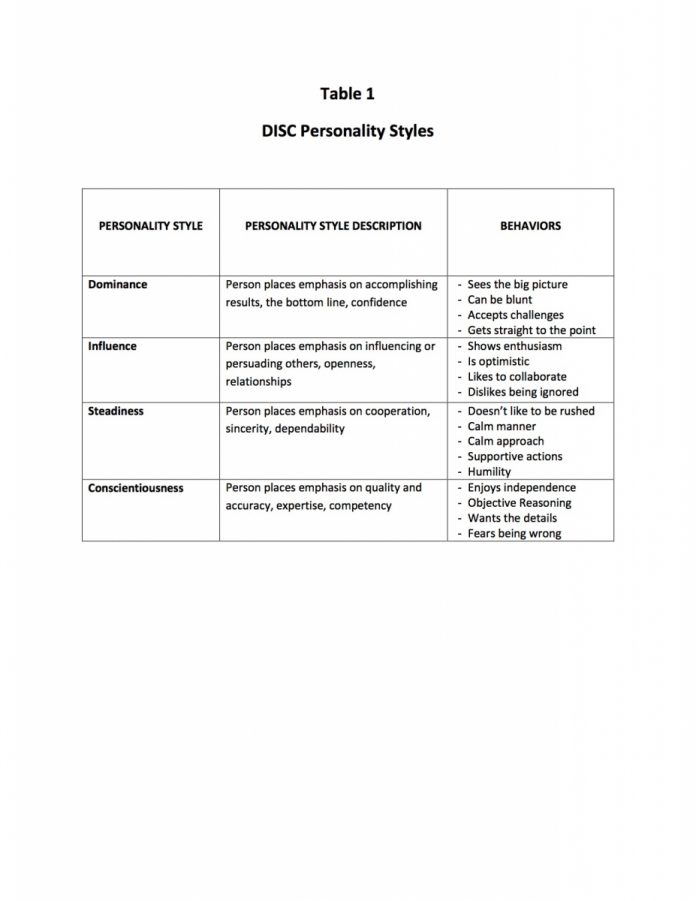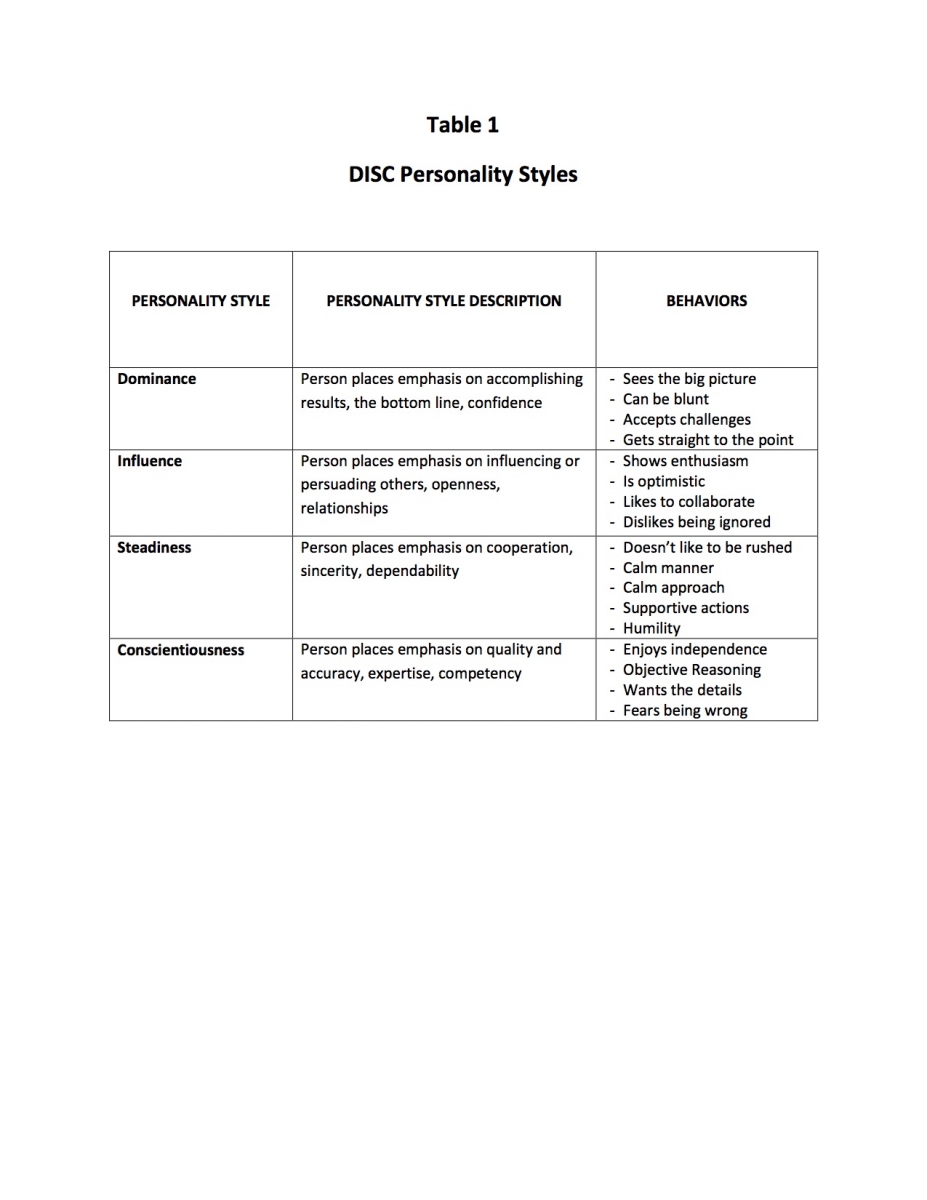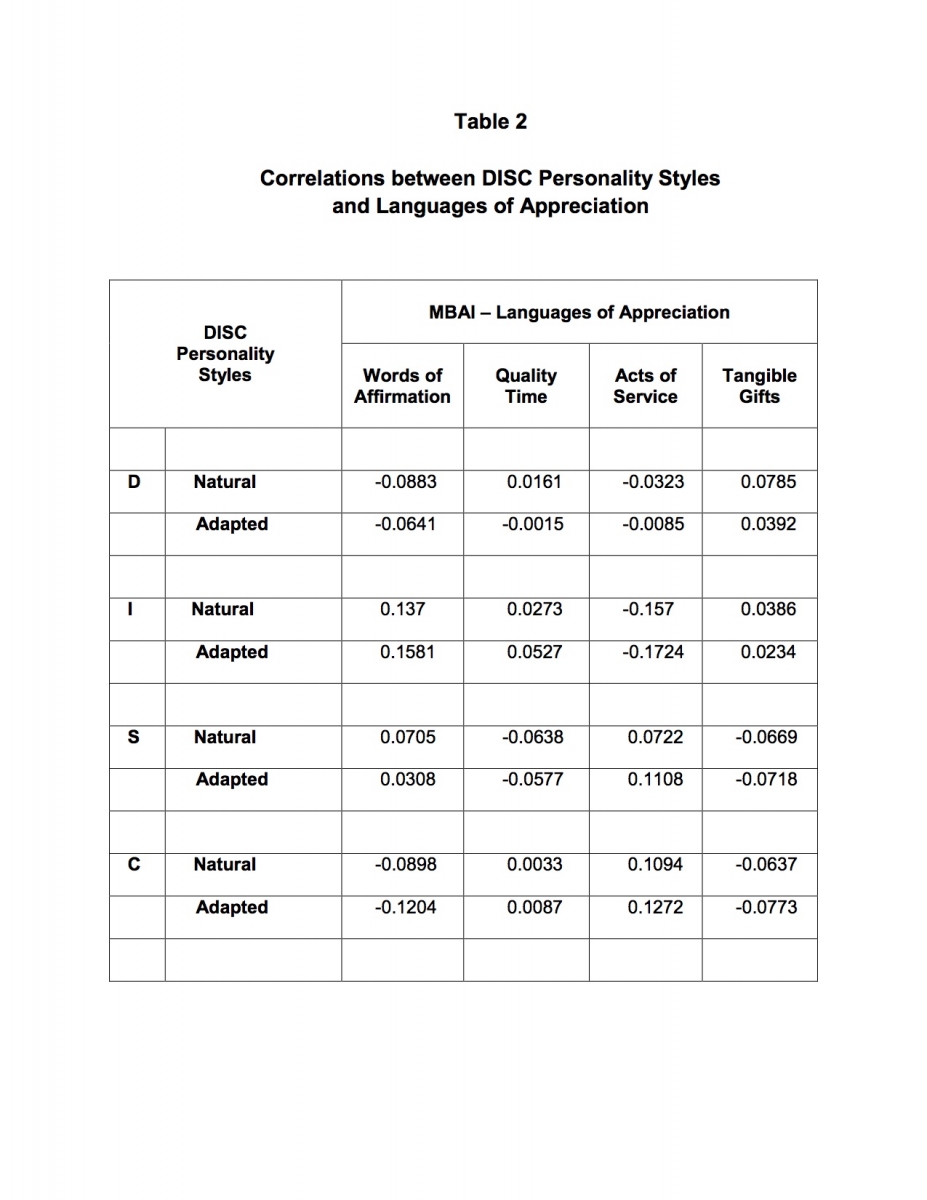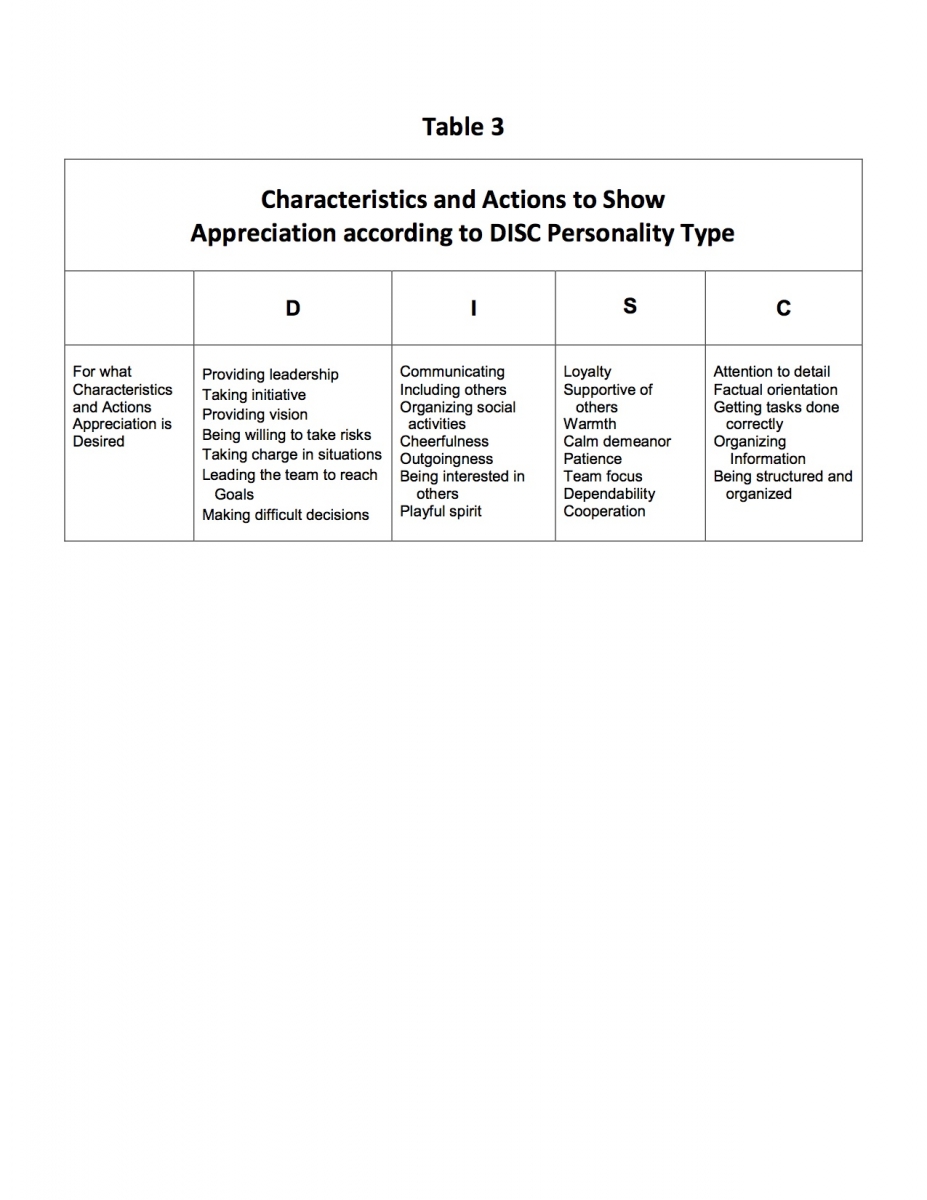
The DISC personality assessment is a tool that is widely used in the workplace to help individuals gain a better sense of themselves and others’ personality style in interpersonal situations. Industrial psychologist Walter Clarke developed a behavioral assessment tool based on the theory of psychologist William Marston.
The name, “DISC,” is derived from the four main personality styles it assesses: Dominance, Influence, Steadiness, and Conscientiousness. It has been in use since the 1950s, but significant further development has occurred since the 1970s. A number of organizations provide both training in the use of and access to the DISC assessments.
Descriptions of each personality style and associated behaviors are shown in Table 1.

The 5 Languages of Appreciation in the Workplace is an approach to understand how individuals prefer to receive appreciation and encouragement in the workplace. Derived from “The 5 Love Languages,” authored by Dr. Gary Chapman, the 5 Languages of Appreciation help identify a person’s primary language of appreciation, their secondary language, and their least valued language of appreciation. The 5 Love Languages primarily are used in personal relationships, while the 5 Languages of Appreciation are the same in name as the 5 Love Languages but are applied differently in the workplace.
The 5 Languages are: Words of Affirmation, Quality Time, Acts of Service, Tangible Gifts, and Physical Touch. For more information on the languages, see “The 5 Languages of Appreciation in the Workplace” by Dr. Gary Chapman and Dr. Paul White (2011.)
As part of their work in applying authentic appreciation in the workplace, Dr. White and Dr. Chapman developed the Motivating by Appreciation (MBA) Inventory, an online assessment tool that identifies the individual’s primary languages, as well as the specific actions preferred within those languages and the individuals from whom they desire appreciation (for example, their supervisor, colleagues, or direct reports).
Both the DISC and the Motivating by Appreciation Inventory have been widely utilized in the marketplace and found to be useful. Therefore, it was felt beneficial to explore how the two assessment tools may be interrelated. There are essentially two primary ways to explore how they may be related:
- Through statistical analysis
- Conceptually and through observations of individuals in groups
Research
A research study was done to explore the statistical relationship between the four DISC personality types and the Languages of Appreciation assessed by the MBA Inventory.
It should be noted that although there are 5 Languages of Appreciation in the workplace and these are addressed both in the book and the training resources developed by Dr. White, initial research with the MBA Inventory found that physical touch was rarely, if ever, the primary language for individuals in the United States majority culture and was often the least valued language. Additionally, there also were some highly negative reactions by individuals who had been the unfortunate victims of sexual harassment. Since the incidence rate was low for the Physical Touch items, and the potential for a highly negative reactions existed, the physical touch language was not included as part of the MBA Inventory.
Method
Through collaboration between one of the major providers of the DISC and the developers of the MBA Inventory, 264 individuals were given both the DISC and the MBA Inventory. The results then were analyzed through statistical tests. Correlation coefficients were determined for between each DISC personality type and each Language of Appreciation.
When determining correlations between two variables, the potential range of relationship extends from a -1.0 to +1.0. A -1.0 correlation means the two variables are perfectly correlated in the opposite direction (for example, high on one scale and low on the other), while a +1.0 correlation means a consistent positive relationship (high on one variable and high on the other variable measured or low on the first variable and low on the second variable). A correlation of 0 essentially means the relationship is random and there is no consistent pattern between how the two variables occur in relationship to one another.
Results
As can be seen from the results below, the statistical analysis shows the correlations between the DISC and the Languages of Appreciation range from -0.17 to 0.16 and that there were no two variables that correlated to any significant degree. That is, the information assessed by the DISC does not consistently vary with any of the variables on the MBA Inventory. Being forthright, this is a highly unusual finding. Typically, there are some variables that are correlated at least moderately.

What No Correlation Means Practically
Essentially, the results show that the constructs of personality style the DISC assesses are independent from the Appreciation Languages the MBA Inventory assesses. Therefore, individuals with any personality style as assessed by the DISC may prefer any of the Languages of Appreciation. Because there is no correlation, then there is no predictability from one set of variables (DISC personality style) to another (Languages of Appreciation).
Practically speaking, this means one cannot predict a person’s preferred Language of Appreciation from their DISC personality type. Conversely, neither can anyone accurately predict a person’s personality style from their Language of Appreciation. The two sets of variables are independent.
Conceptual Relationships and Observations
Another way to look at the interrelationship between the DISC and Language of Appreciation is to think about them conceptually and then also make observations in daily life. Even though knowing a person’s DISC results or preferred Language of Appreciation does not give one an ability to predict what type of personality style or which Language of Appreciation they prefer, it does appear that knowing a person’s DISC personality style provides the ability to better predict for what they prefer to be appreciated. For example, a person high in the D personality style is going to want to be appreciated for different types of actions and behaviors more than a person with one of the other personality styles. See Table 2 below for examples of the different behaviors the DISC personality types value.

So the information provided by taking both the DISC and the Motivating by Appreciation Inventory provide helpful information for what behaviors the different DISC personality styles like to be shown appreciation.
Most Important Result
The fact that the DISC and the 5 Languages of Appreciation assess independent constructs has significant implications for leaders and organizations. Many organizations use the DISC to help supervisors and employees understand others’ personality style: to better communicate with them, to understand how they think about situations and their decision-making process, and what they value. This information helps team members work together more effectively.
On the other hand, the information provided by the MBA Inventory gives specific information to leaders and colleagues about how best to show appreciation, encourage, and support their team members in a way that’s effective and can be perceived as authentic (versus generic and impersonal). Research has clearly shown that individuals who feel valued and appreciated are far more likely to stay engaged mentally and emotionally in their job, to remain as part of the team, to perform better, get along better with others, and have higher customer service ratings. Therefore, utilizing the 5 Languages of Appreciation is critical to keep team members the organization has worked hard to bring together to work effectively as a team.
Just as the MBA Inventory is not designed to be especially helpful in employee selection or understand personality styles, neither is the DISC designed to show leaders how to provide the encouragement and appreciation needed to keep key team members. Therefore, both assessment tools are needed to find, incorporate, and keep valued team members—and the results they provide are complimentary to one another.
In summary, the DISC provides valuable information for selecting and successfully incorporating new employees into their respective work group, while the MBA Inventory gives important information on how to keep key team members engaged and employed. When utilized together, the DISC and MBA Inventory provide collaborative information on how to effectively communicate appreciation and for what colleagues want to be shown appreciation.
DISC information was obtained from https://www.discprofile.com/what-is-disc/overview/
Paul White, Ph.D., is a psychologist, speaker, and consultant who makes “work relationships work.” He is also co-author of “The 5 Languages of Appreciation in the Workplace,” “Rising Above a Toxic Workplace,” and “Sync or Swim.” For more information, visit www.appreciationatwork.com.




